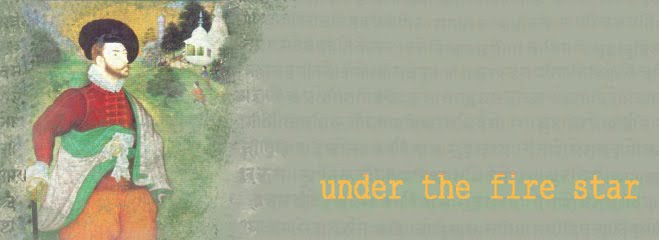People make large or small images of Ganesh, for their houses, or for neighbourhood displays, and perform ceremonies to invoke the god into the image. Then, because they must do puja every day to the enlivened image, on September 7 all the Ganesh images will be carried to a nearby body of water and ceremoniously thrown in.
There's a joke about this:
A Christian, a Muslim and a Hindu are in a boat together, and it capsizes. The Christian calls out to Jesus and is rescued. The Muslim calls to Allah, and is rescued. The Hindu calls out to Ganesh, who appears before him. The Hindu says, "Help! Can't you see that I don't know how to swim? I'm drowning!" Ganesh says, "Every single year you throw me into the water and watch me sink, and sing happy songs and go away. What makes you think I'm going to help you now?"
Read about the meaning of the festival.
Myths and Legends About Ganesh (in French and English)
Several pages of information about Ganesha, with illustrations.
Listen to a bhajan (hymn) to Ganapati (this is a nice, lively one). And here. And here. (The last link has a whole list of links to tunes and words for bhajans to different deities -- to help people who wish to join together in singing sessions called bhajanas.)
Read a list of Ganesh's names, which express his attributes. My favourite is Lambodara: Big-Bellied. (This site also contains answers to some of your questions about Ganesh, such as, 'why does he have only one tusk; and why does he ride on a rat; and by the way, why does he have an elephant's head?')
Make special recipes for Vinayaka Chaturthi here and here.
Here is a poem about Ganesh from Sanskrit Poetry, translated by Daniel H. H. Ingalls:
May the dancing god Ganesa be your aid,
copied by the guardian elephants of the horizon,
who spring up lightly from the earth that trembles
at the stamping of his feet,
the while with upraised trunk he drinks and then sprays back
like drops of water the great circle of the stars.Rajasekhara





























 S. Muthiah's
S. Muthiah's -donatedsb_f.jpg)


